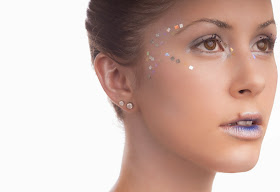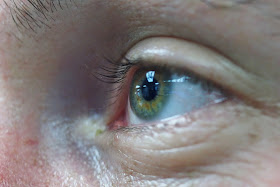Sorry I've been a way for so long. Combine travel, illness and fortunate photography assignments, you can bet it has kept me away from updating the blog. Thanks for your patience.
Do you remember those science experiments conducted in elementary school where you wave a light source in front of your eye in a dark room? I distinctly recall my amazement seeing my classmate's pupils expand in the absence of the light and contract as soon I wave the light closer to my eyes. Amazing, right? It wasn't until I started to do photography did I understand my eyes were just like a lens and my pupil like the aperture blades. I always wondered why I could get away not wearing my glasses during the day and absolutely needed them at night. Due to the abundance of light found during the day, our pupils would contract significantly allowing for light to be easily focused into the back of our eye. At night our pupils are wide open and in my case adversely affects my vision because light is less focused as it travels through the eye (Please excuse the extremely oversimplification of how the eye works, I promise it will lead to a photography tip) Think of your eyes when you want to you obtain the sharpest photograph possible.
 |
| It's all in the eyes. You don't have a true portrait unless you have nailed critical focus on the eyes. |
When I buy a fast prime (non-zooming lens), I typically like
to shoot it at the widest aperture (smallest f/value). The problem with most
primes, with exception to most of Panasonic’s and Olympus’ primes, is that
images tend to be very soft at the widest setting. This is particularly
troublesome for some of the vintage, all manual prime lenses I have in my
collection. My Voigtlander 40mm f/1.4 lens is one of the biggest offenders and
is almost unusable in my opinion. In my
previous photography tip post, I explained that controlling your aperture plays
a part in the amount of depth of field you introduce in a photograph (See post HERE), but did
you know that the aperture you use will also help increase the sharpness of
your image. I will explain what a “stop” is in a future post, but the best way
to improve your image quality with a soft lens is to stop your lens down. The
following f/values indicate an incremental increase by 1 stop.
f/1, f/1.4, f/2, f/2.8, f/4, f/5.6, f/8, f/11, f/16, f/22
The general guidance I see online is to stop your lens down
two times in order to achieve maximum sharpness/image quality. If I were to
follow this guidance, then my Voigtlander 40mm f/1.4 lens will perform
optimally at f/2.8. From my experience, this is a good rule to follow if you
have ample light to work with. In low light situations, you want to shoot at a
wide enough aperture to gather sufficient light unless you have an in-body
image stabilization system like the Olympus OMDs and Pen lines or built in
stabilizers in your lenses. However, in
my experience each lens has their own sweet spot and it’s not always 2 stops
above. Sometimes it’s 3 or 4 stops above its widest aperture like my 40mm Voigtlander
lens. Of course your mileage may vary depending on a number of factors like
manufacturing variances amongst each lens, age of the lens, how well a lens is
taken care of or whether or not a lens is plagued with fungus, scratches or dust.
Zooms behave in the same way, in that they typically work better stopped down. However, zooms tend to be softer at the extreme ends of their focal range, mainly at the long end. The Olympus 12-50 zoom has been reported by many owners to perform the weakest at the 50mm range. That and its widest aperture is at f/6.3 (very slow). If your shooting situation allows for it, bring the zoom back approximately 10% or in the case of this 12-50mm around 5-10mm and step forward a bit to maximize the performance of your lens. I have already trained myself to ignore the longest end of the zoom unless I am utterly desperate to have that additional reach. |
| A favorite from my 12-50mm lens stopped down to f/8 |
Hope you guys are enjoying these photography tips. Feel to hit me up with questions in the comment section below.
So say we all,
Dino
So say we all,
Dino




No comments:
Post a Comment